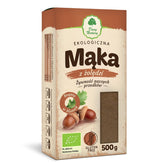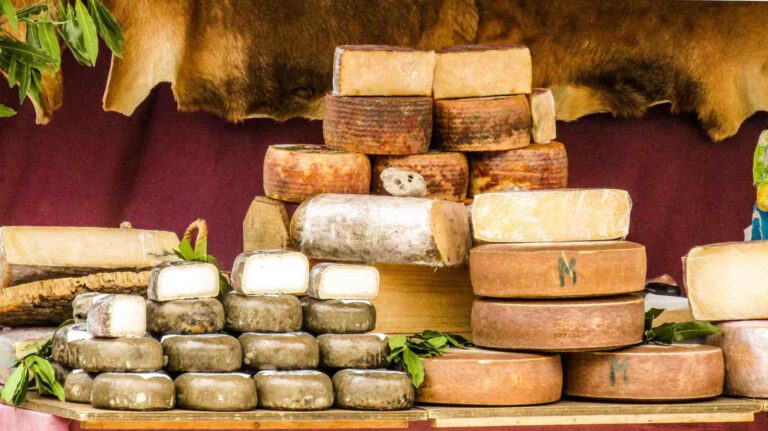Types and varieties of the most popular cheeses
Contents:
The history of cheese is inextricably linked to the pastoral era, when, after years of constant wandering in search of game, humans settled in one place, sheep and goats began to provide them with milk, and cattle took center stage in agricultural work. An interesting fact is that according to research by an international team of scientists published in the journal Nature, the oldest cheese in the world was produced 7,500 years ago during the Neolithic period in Kuyavia, present-day Poland.
Today, we eat cheese almost every day; around 4,000 types of cheese are produced worldwide. We have hard and soft cheeses, cheeses with lichen or mold growth, spicy and mild, unripe and ripe, sheep's cheese, cow's cheese, and goat's cheese. The selection is vast. So let's take a closer look at the world's most popular and valuable cheese.
Cheese classification
Cheeses are classified according to the type of milk from which they are made:
- Cow - Gouda and Emmental,
- Sheep cheese - Bryndza, Bundz, Oscypek,
- Goat - Cabrion, Montrachet, Tignard,
However, based on the production technology and the type of cheese ripening process, we can distinguish:
- soft rennet cheese – Brie, Camembert ,
- semi-hard rennet cheese - Gouda,
- hard rennet cheese - Parmesan , Cheddar ,
- Cheese - Ricotta ,
- unripened sour cheese – in the form of cottage cheese
- ripening sour cheese - in the form of lumps,
- Sour rennet cheese - cottage cheese.
The most popular and appreciated cheeses
- Gouda – is a yellow Dutch cheese with a mild, creamy, slightly sour, and quite salty flavor. It contains a lot of fat but is also a source of easily absorbed calcium, zinc, and selenium. It is suitable for everyday use on sandwiches, toasties, pies, and casseroles, and also tastes great as a snack with light lager beer.
- Emmentaler – again, a Swiss cheese characterized by large, round holes. It is made from cow's milk. Its flavor is quite mild, sweet with nutty notes. We usually eat it on sandwiches,
- Cheddar – originates from England, is mature, full-fat, and made exclusively from cow's milk. It can be light yellow or slightly orange in color and tastes slightly sweet, but also tart, with a noticeable nutty note. It's best eaten on its own or served as a snack with dry red wines.
- Parmesan is an Italian rennet cheese made from cow's milk. It is hard, matures slowly, and is brittle. The flavor is expressive, intense, and slightly spicy, yet also sweet. It matures for a long time, even several years, during which time it loses a lot of water. It is high in calories and fat, but is added to dishes in small amounts due to its distinctive flavor. It also contains a lot of calcium and protein. Sprinkle Italian pasta with grated Parmesan cheese; you can also cut it into thin flakes or chips and add it to salads. It tastes delicious with sweet fruits, such as grapes or figs.
- Camembert – is a mature French mold-covered cheese made from cow's milk. Its interior is creamy, mild, and smooth, while the mold surrounding it gives it a distinctly spicy aftertaste. It provides a high level of zinc. It tastes excellent as an accompaniment to dry red wine. It can be served with fruit—figs, pears, and even walnuts .
- Roquefort – one of the most prized French cheeses, aged, blue-molded, and made from sheep's milk. Its texture is slightly crumbly, becoming creamy when swallowed. Roquefort has a very distinctive, salty flavor. It can be added to tarts and kish, and can also be combined with sweet flavors, such as pear.
- Oscypek – the original Podhale oscypek contains approximately 70% sheep's milk and 30% cow's milk. It is a hard, smoked, naturally produced cheese. It is salty, expressive in flavor, and crunches slightly when eaten. Compared to popular cow's cheeses, it contains more calcium, iron, and zinc, as well as vitamins A and B12 . It pairs perfectly with cranberry jam.
Cheese accompanies us every day – as a side dish to sandwiches, as an ingredient in dinner
or as a pure snack. Cheese provides us with protein, calcium, phosphorus, and vitamins, and ripening cheese is also a source of zinc. Cheese consumption is especially recommended for people with osteoporosis.
THE PUBLISHER'S CHOICE
Dried plums 1 kg BIOGO
- €7,01
- €7,01
- Unit price
- / per
Dried White Mulberries 500 g ORGANIC
- €5,84
- €5,84
- Unit price
- / per
Almonds 1 kg BIOGO
- €11,69
- €11,69
- Unit price
- / per
Cranberries sweetened with apple juice organic 1 kg BIOGO
- €16,37
- €16,37
- Unit price
- / per
Dried dates 1 kg BIOGO
- €4,21
- €4,21
- Unit price
- / per
Unpeeled buckwheat groats 1 kg BIOGO
- €2,81
- €2,81
- Unit price
- / per
Walnuts 800 g BIOGO
- €8,65
- €8,65
- Unit price
- / per
Peeled sunflower seeds 1 kg BIOGO
- €3,04
- €3,04
- Unit price
- / per
PULLED ORGANIC SUNFLOWER SEEDS 1 KG BIOGO
- €4,44
- €4,44
- Unit price
- / per












































































































































